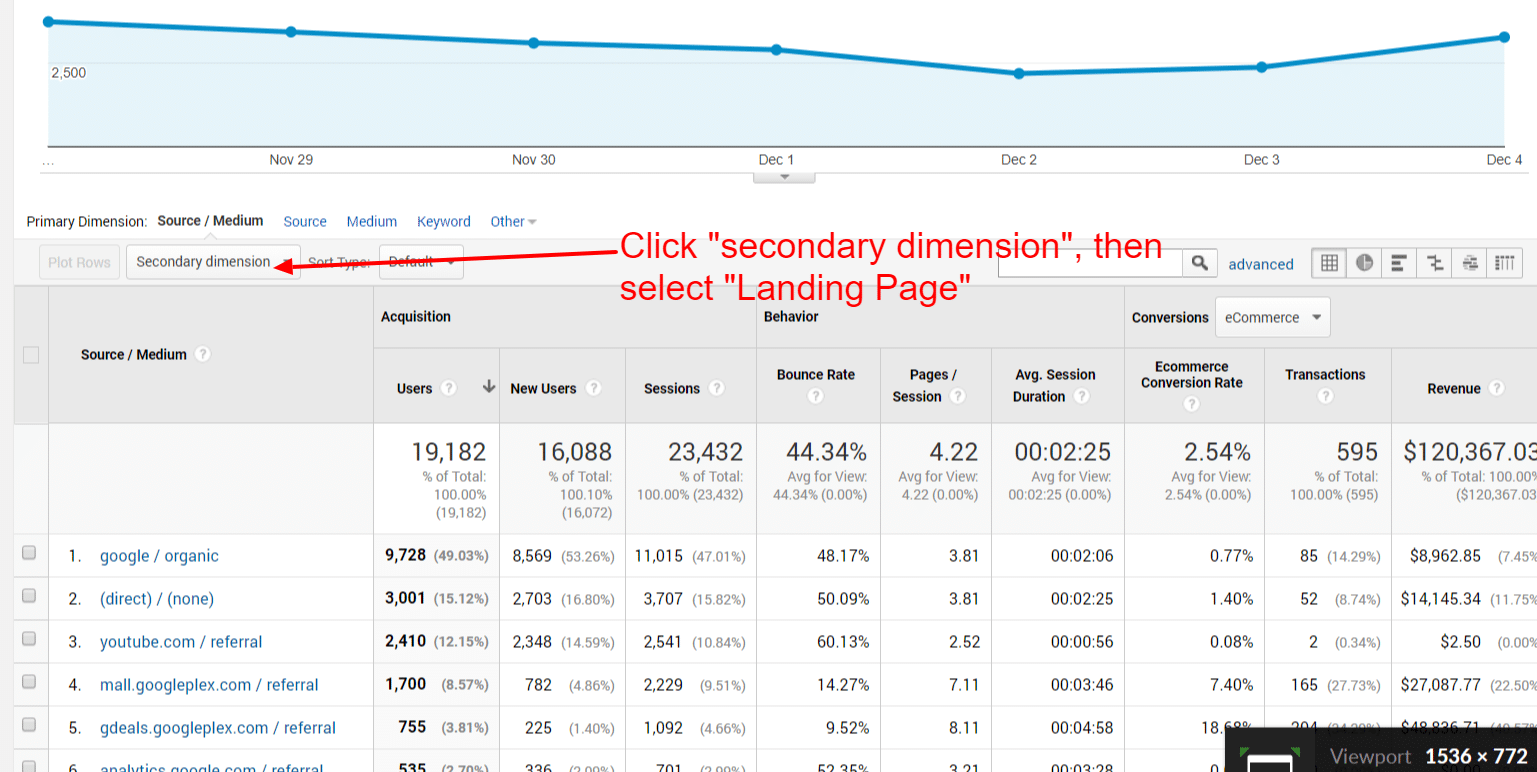Enhance Your Data Analysis Utilizing Second Dimension in Google Analytics
Exploring the capabilities of second measurements in Google Analytics opens up a realm of opportunities for refining data evaluation. The capability to study information better beyond the surface area degree provides a nuanced sight that can form calculated decisions. By layering added dimensions onto key information collections, a more complex story emerges, shedding light on user interactions and performance indications. This dynamic approach to information assessment holds the essential to unlocking covert patterns and trends that can change how companies translate their digital footprint.
Understanding Second Dimensions
Secondary dimensions in Google Analytics refer to extra specifications that can be added to the main measurement, allowing for a much more in-depth analysis of data (Secondary Dimension in Google Analytics). By including secondary dimensions, experts can section and filter data to reveal patterns, fads, and relationships that might not be apparent when looking at the information as a whole.

Benefits of Making Use Of Secondary Measurements
When assessing data in Google Analytics, the utilization of second measurements provides invaluable insights into individual behavior and efficiency metrics. By adding a secondary dimension to your primary information, you can dig much deeper right into the attributes of your internet site site visitors and their interactions. One of the essential benefits of making use of second measurements is the capability to segment and contrast information better. This segmentation permits you to understand exactly how different variables, such as demographics or web traffic resources, impact individual behavior and conversions (Secondary Dimension in Google Analytics).
Furthermore, secondary measurements aid in recognizing patterns and relationships that may not be quickly noticeable when looking at the data in seclusion. This deeper degree of evaluation can uncover beneficial info that can assist advertising and marketing methods, website optimization, and overall business choices. Furthermore, second dimensions enhance the context of your main information, supplying a much more detailed sight of individual engagement and efficiency metrics. Overall, using secondary measurements in Google Analytics can dramatically boost the deepness and high quality of your data analysis, causing even more enlightened decision-making and improved results.
Just How to Include Second Dimensions
By integrating additional measurements in Google Analytics, users can gain much deeper understandings into their information evaluation procedure, enabling for more detailed analysis of individual actions and performance metrics. Including additional measurements is a simple procedure that can significantly enhance the depth of evaluation. When in the record, situate the "Second dimension" tab above the data table.
Analyzing Data With Secondary Dimensions
Making use of additional measurements in data analysis offers a much more comprehensive understanding of customer actions and efficiency metrics. By including a second measurement to your key information embeded in Google Analytics, you can dig deeper right into the qualities of your site visitors and their interactions. As an example, incorporating the key measurement of 'source/medium' with the additional dimension of 'touchdown web page' can disclose which certain you can look here web pages are bring in web traffic from different resources, aiding you maximize these pages for better interaction.

Basically, assessing data with second measurements equips you to get useful understandings into user habits, determine patterns, and make informed choices to enhance the performance of your electronic properties.
Finest Practices for Secondary Dimensions
In data analysis, including secondary measurements properly can significantly enhance the depth of understandings originated from metrics and customer actions patterns. When utilizing additional dimensions in Google Analytics or any various other analytical device, it is essential to abide by ideal techniques to guarantee the precision and relevance of the information evaluation.
One key ideal practice is to meticulously choose second measurements that complement the key measurement being assessed. Selecting additional dimensions that give additional context or additional segmentation can use an extra extensive understanding of the information. It is additionally necessary to avoid overcomplicating the evaluation click to find out more by consisting of way too many additional measurements, which might result in confusion or dilution of insights.
In addition, it is suggested to try out various mixes of secondary and main measurements to uncover brand-new relationships and fads. Regularly examining and refining the option of additional measurements based on the details goals of the analysis can cause more actionable understandings. By complying with these best techniques, data analysts can utilize second measurements effectively to boost the overall information analysis procedure and content decision-making capacities.

Conclusion
In verdict, incorporating additional dimensions in Google Analytics is important for an extensive information evaluation approach. By leveraging additional measurements alongside key ones, experts and online marketers can reveal important understandings and relationships that can notify decision-making and enhance digital advertising methods. Recognizing just how to properly use additional dimensions and following best practices will allow experts to extract significant information and improve their overall efficiency metrics.
Additional dimensions in Google Analytics refer to additional parameters that can be added to the main dimension, permitting for an extra comprehensive analysis of information. By including secondary measurements, analysts can segment and filter data to discover patterns, fads, and relationships that might not be evident when looking at the information as a whole. Incorporating the main dimension of 'source/medium' with the secondary measurement of 'landing page' can disclose which specific pages are attracting traffic from different resources, aiding you optimize these web pages for much better engagement.
One trick finest practice is to carefully select second dimensions that enhance the main dimension being assessed. By following these finest methods, data experts can take advantage of additional dimensions effectively to enhance the general data evaluation process and decision-making capacities.
Comments on “Step-by-Step Overview: Leveraging Secondary Dimension in Google Analytics”